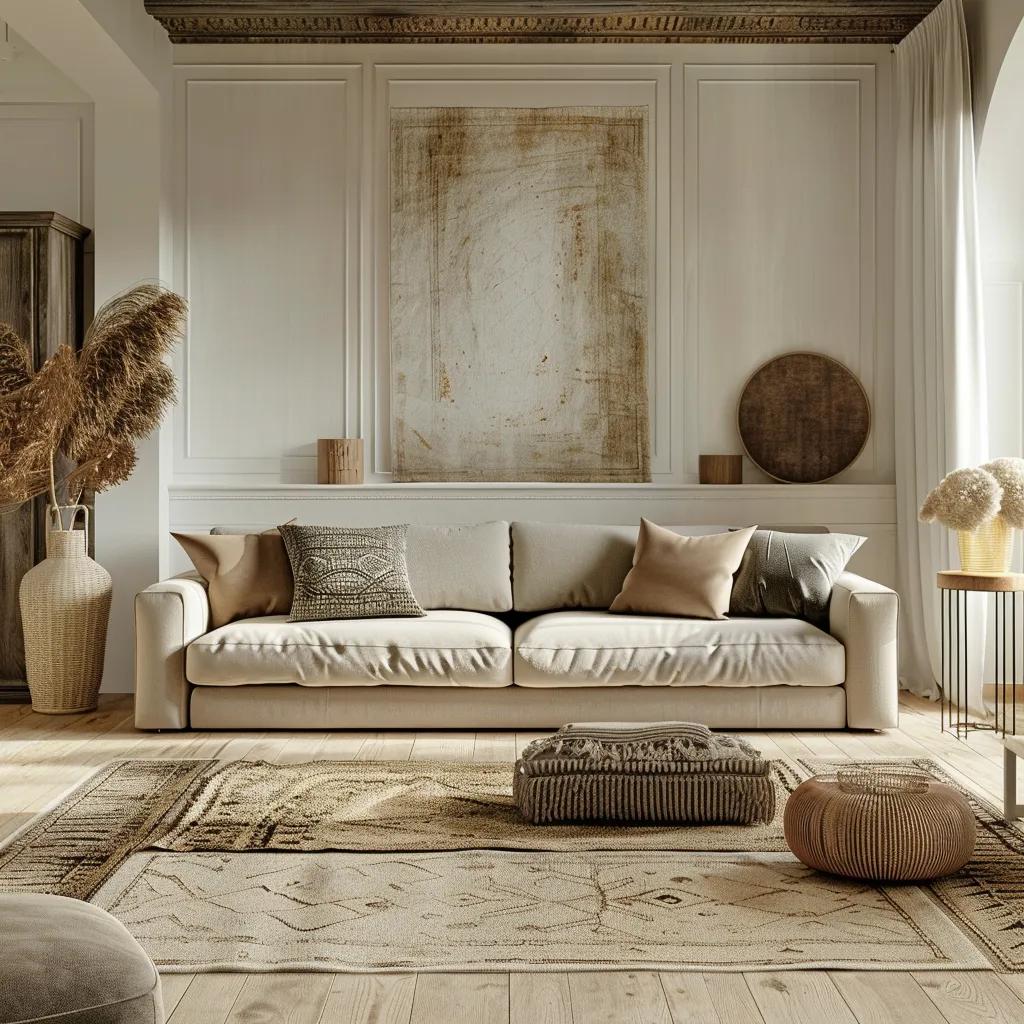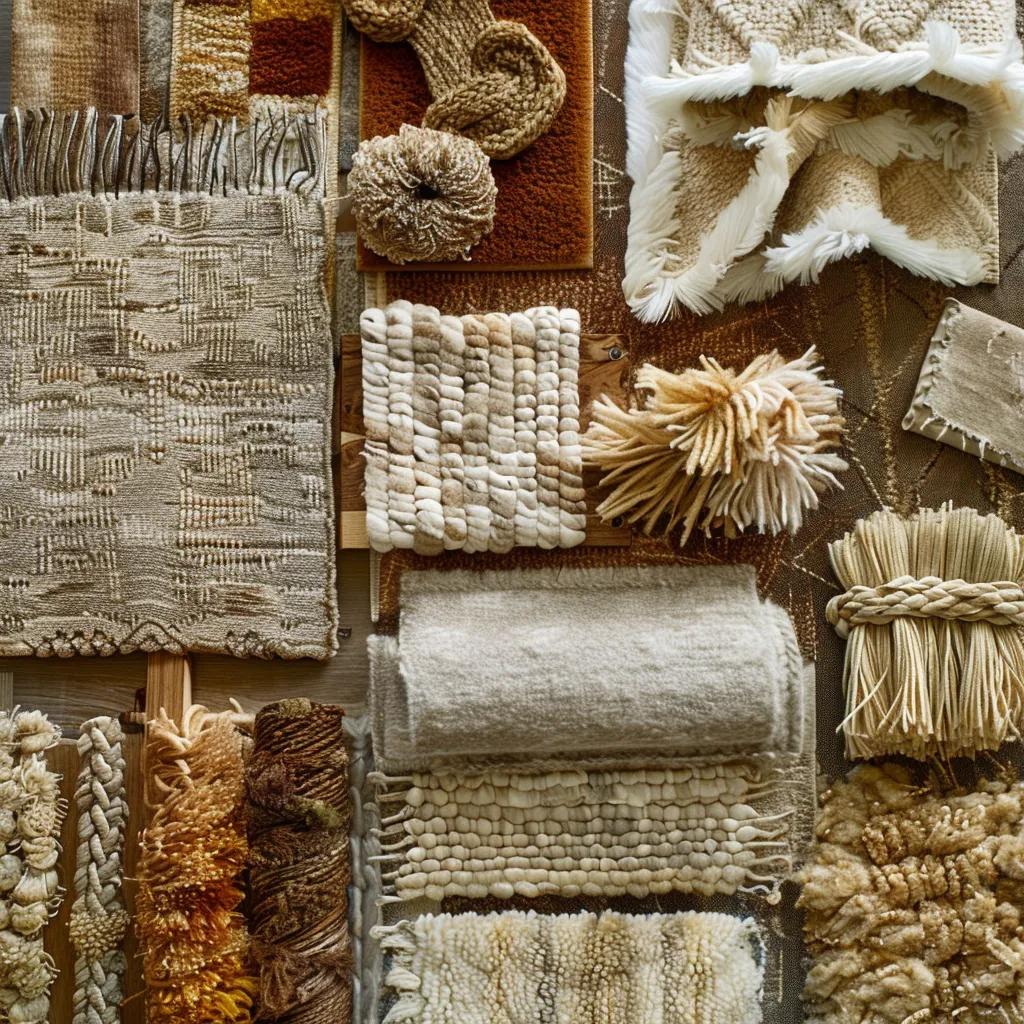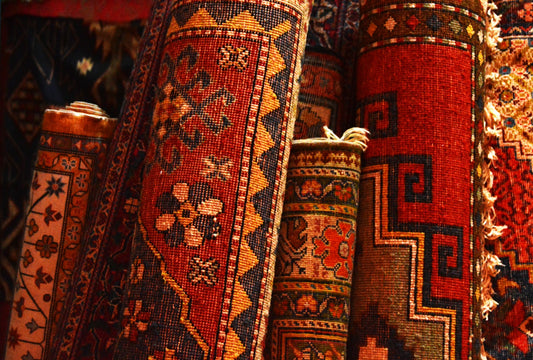Why You Shouldn’t Assume All Rugs Sold Online Are the Same

Why Not All Rugs Sold Online Are the Same: Understanding Quality, Materials, and Value

Consumers often assume that any rug labeled “handmade” or sold by an oriental rug store online offers uniform quality and value. Yet, variations in fiber content, weaving techniques, design complexity, origin, and ethical certifications create a spectrum of durability, texture, and price. In this article, you’ll discover why rugs diverge so widely in performance and cost, learn to spot premium craftsmanship, explore core material types, compare construction methods, decode price drivers, gain tips for confident online purchases, and uncover emerging trends shaping the digital rug market.
What Factors Make Rugs Sold Online Different in Quality and Price?
Rug quality and price vary based on material selection, weaving techniques, design intricacy, provenance, and brand reputation, each affecting longevity and cost. Understanding these factors brings clarity to seemingly similar listings and empowers you to choose a rug that meets both aesthetic and performance goals.
| Factor | Attribute | Impact on Quality & Price |
|---|---|---|
| Material | Fiber origin & purity | Natural fibers (wool, silk) cost more but last longer. |
| Construction Method | Hand-knotting vs machine | Hand-knotted rugs command higher prices and detail. |
| Design Complexity | Pattern density | Intricate motifs increase labor hours and price. |
| Geographic Origin | Traditional weaving region | Provenance (Persian, Turkish) adds heritage value. |
| Brand Reputation | Artisan recognition | Established makers justify premium pricing. |
This breakdown clarifies why two wool rugs from different makers can differ drastically in durability and cost, setting up how you’ll evaluate quality online next.
How Do Rug Materials Affect Quality and Cost?

Material choice determines a rug’s resilience, feel, and price. Natural fibers like wool offer warmth and stain resistance, whereas silk delivers a lustrous appearance that requires delicate care. Synthetic fibers such as polypropylene reduce cost and improve stain resistance but may feel less luxurious.
- Wool rugs resist crushing and inherently shed soil, translating to extended lifespan and moderate price.
- Silk rugs provide fine detail and sheen but demand gentle cleaning and carry a higher price per square foot.
- Polypropylene rugs offer stain resistance and budget-friendly pricing, ideal for high-traffic spaces with lower upkeep.
- Blended fibers balance softness, durability, and cost for versatile mid-range options.
Material Properties and Rug Performance
The choice of rug material significantly impacts its durability, feel, and price. Natural fibers like wool offer warmth and stain resistance, while silk provides a luxurious appearance. Synthetic fibers, such as polypropylene, are cost-effective and stain-resistant but may lack the same luxurious feel.
American Wool Council
This information supports the article's discussion of how different rug materials influence quality and cost.
Such material insights prepare you to decode listings and understand why fiber labels directly influence online pricing.
Why Does Rug Construction Method Influence Value?
Hand-knotted rugs involve skilled artisans tying each knot, yielding exceptional durability and detail; machine-made rugs rely on power looms for speed and uniformity at lower cost. This divergence in labor intensity and finish creates clear value distinctions.
Handmade vs. Machine-Made Rugs
Handmade rugs are crafted by skilled artisans who tie each knot, resulting in exceptional detail and durability. Machine-made rugs, on the other hand, use automated looms for speed and uniformity, which lowers labor costs but limits uniqueness.
The Carpet and Rug Institute
This citation provides further details on the construction methods and their impact on the value of rugs, as discussed in the article.
- Hand-knotted rugs: Up to 200 KPSI (knots per square inch) ensure fine motifs and decades-long use.
- Hand-tufted rugs: Artisans use a tufting gun over a backing, reducing time and cost while preserving some craftsmanship.
- Machine-made rugs: Automated looms produce consistent patterns quickly, lowering labor costs but limiting uniqueness.
- Flatweave rugs: Pile-less weaving yields reversible designs with moderate durability at accessible prices.
These method-based differences explain why two rugs of identical size and material might retail at vastly different rates.
How Does Design Complexity and Origin Affect Rug Pricing?
Elaborate patterns demand more weaving hours and higher knot counts, while origin in historic weaving regions (e.g., Persia, Anatolia) adds collectible value. A rug from a renowned atelier features cultural heritage that commands premium pricing, reflecting both artistry and provenance. This heritage premium shapes the offerings you see in any oriental rug store online.
How Can You Identify High-Quality Rugs When Buying Online?
Assessing rug quality virtually requires attention to detailed specifications, clear imagery, and trust signals. Focus on fiber content, construction metrics, dye stability, and ethical certifications to differentiate genuine artisan work from mass-market imitations.
- Examine close-up photographs for knot density, pile evenness, and edge binding.
- Review product descriptions for fiber origin, KPSI/KPM (knots per meter), and dye type.
- Check for certifications like GoodWeave or OEKO-TEX to confirm ethical and safe manufacturing.
- Read verified user reviews that reference long-term performance and care experiences.
By applying these criteria systematically, you can approximate an in-person inspection and choose rugs that withstand daily use.
What Are the Key Quality Indicators Like Knot Count and Dye Quality?
Knot count, expressed as knots per square inch (KPSI), directly correlates with durability and pattern clarity. High-quality dyes—preferably natural or fiber-reactive synthetic—resist fading and bleeding.
- Knot Density: Above 120 KPSI indicates fine detail and longevity.
- Dye Type: Fiber-reactive or natural dyes offer superior colorfastness.
- Backing Uniformity: Even knot tension on the reverse ensures consistent wear.
- Pile Height Consistency: Uniform pile prevents premature matting.
These metrics form an objective standard for evaluating listings labeled “handmade rugs.”
How to Distinguish Handmade Rugs from Machine-Made Rugs?
Handmade rugs feature minor irregularities in weave and fringe, signaling artisan involvement; machine-made pieces are mechanically uniform.
- Fringe Integration: Handmade fringes are extension of warp threads, while machine-made fringes are sewn on.
- Knot Variation: Subtle variations in knot size and spacing occur in handcrafted work.
- Backing Appearance: Handmade backs reveal individual knots; machine backs have uniform, often glued-backed surfaces.
- Selvedge Quality: Hand-finished edges loop intricately; machine edges are stitched or serged.
Recognizing these signs sharpens your ability to spot authentic handmade rugs versus mass-produced alternatives.
Which Certifications Ensure Rug Authenticity and Ethical Sourcing?
Certifications provide independent verification of craftsmanship quality and ethical practices:
- GoodWeave: Guarantees child-labor-free hand-knotted production.
- GOTS (Global Organic Textile Standard): Verifies organic fiber content and processing.
- OEKO-TEX Standard 100: Confirms absence of harmful substances in dyes and fibers.
Such seals of approval bolster trust when browsing online listings lacking physical inspection.
What Are the Main Types of Rug Materials and Their Characteristics?
Different rug fibers present distinct properties in durability, texture, and maintenance, guiding optimal placement in your home. The table below compares core material types.
| Material | Fiber Type | Characteristics |
|---|---|---|
| Wool | Natural | High resilience, flame-resistant, moderate price |
| Silk | Natural | Lustrous sheen, fine detail, delicate, premium price |
| Cotton | Natural | Soft hand, machine-washable, budget-friendly, low pile height |
| Jute & Sisal | Natural | Textured appearance, eco-friendly, moderate durability, rustic style |
| Polypropylene | Synthetic | High stain resistance, UV-stable, low cost, slightly coarse texture |
| Polyester/Nylon | Synthetic | Vibrant color retention, abrasion-resistant, mid-range pricing |
This overview equips you to align material properties with room function and design intent.
What Are the Benefits and Drawbacks of Natural Fibers Like Wool and Silk?
Natural fibers combine comfort and tradition with specific care needs:
- Pros of Wool: Durable in traffic areas, retains shape, flame retardant.
- Cons of Wool: Prone to moth damage, higher initial cost.
- Pros of Silk: Exquisite sheen and density, enhances intricate motifs.
- Cons of Silk: Requires professional cleaning, not suited for heavy traffic.
Understanding these trade-offs helps you choose where a wool or silk rug truly earns its price.
How Do Synthetic Fibers Like Polypropylene Compare in Durability and Price?
Synthetic fibers deliver practical performance at scale:
- Polypropylene offers exceptional stain and moisture resistance, ideal for kitchens and outdoors.
- Polyester retains vibrant hues over time, minimizing fading in sunlit rooms.
- Nylon balances softness and abrasion resistance, performing well under heavy footfall.
These fibers democratize style by offering low-maintenance rugs at attractive price points.
When Should You Choose Jute, Sisal, or Cotton Rugs?
Plant-based weaves suit casual, eco-conscious décor:
- Jute/Sisal: Textural statement pieces in living rooms or home offices, moderate resilience.
- Cotton: Affordable, machine-washable options for kids’ rooms or casual seating areas.
- Hemp & Bamboo: Emerging options with antimicrobial properties and sustainable profiles.
Matching fiber characteristics to room usage ensures longevity and style coherence.
How Do Different Rug Construction Methods Impact Durability and Appearance?
Construction technique not only influences price but also surface texture and lifespan. Below is a comparative breakdown.
| Construction Method | Durability | Appearance & Texture |
|---|---|---|
| Hand-Knotted | Exceptional (decades) | High detail, plush pile, artisan finish |
| Hand-Tufted | Moderate | Soft pile, visible tufted loops |
| Machine-Made | Variable (low–high) | Uniform design, thinner pile |
| Flatweave/Hand-Loomed | Good (no pile) | Reversible, flat profile, low maintenance |
This comparison clarifies why hand-knotted pieces justify their premium, while flatweaves excel in versatility.
What Makes Hand-Knotted Rugs More Durable and Valuable?
Hand-knotted rugs require skilled weavers tying individual knots, creating dense, long-lasting surfaces that deepen in beauty over time. Knot count, artisan expertise, and traditional dyeing embed value that resists wear and retains collectible appeal.
How Are Hand-Tufted and Machine-Made Rugs Produced and Priced?
Hand-tufted rugs use a tufting gun to insert yarn into a canvas backing, then apply glue and secondary backing—balancing craft with efficiency. Machine-made rugs are woven by power looms, offering cost-effective mass production but lacking the subtle irregularities prized in handcrafted pieces.
What Are the Features of Flatweave and Hand-Loomed Rugs?
Flatweave and hand-loomed rugs lack pile, resulting in reversible designs, easy maintenance, and moderate durability. Their low-profile structure is ideal for high-traffic areas and storage flexibility, delivering a clean aesthetic at accessible price points.
Why Do Prices Vary So Much Among Rugs Sold Online?
Price differences arise from labor costs, material rarity, design complexity, and sustainability commitments—all converging to create a broad pricing spectrum. The table below dissects these price drivers.
| Price Driver | Description | Influence on Cost |
|---|---|---|
| Labor Intensity | Hours of artisan work per square foot | Higher labor raises final price |
| Brand & Provenance | Reputation and historical weaving region | Heritage adds collectible value |
| Design Complexity | Knot density and pattern intricacy | Intricate work demands premium pricing |
| Size & Shape | Custom dimensions or unusual formats | Nonstandard sizes incur additional labor |
| Ethical Sourcing | Use of certified sustainable materials | Certification costs are passed to buyer |
Recognizing these elements clarifies why two wool rugs of identical dimensions can have vastly different price tags.
How Do Labor, Brand Reputation, and Rarity Influence Rug Prices?
Brands with a legacy of craftsmanship and limited artisan supply command premium pricing. Rugs from renowned origins or small-batch workshops reflect scarcity value, driving cost beyond material expenses alone.
What Role Does Size and Design Complexity Play in Pricing?
Larger rugs require more raw materials and weaving time, while detailed motifs with hundreds of knots per square inch multiply labor hours. Both factors scale cost nonlinearly as dimensions and complexity increase.
How Does Ethical and Sustainable Sourcing Affect Cost?
Adhering to GoodWeave or organic standards involves audits, fair wages, and eco-friendly processing, adding certification and oversight expenses that elevate consumer prices but ensure social and environmental responsibility.
How Can Consumers Make Informed Decisions When Buying Rugs Online?
Navigating online rug catalogs demands a structured approach—ask targeted questions, verify trust signals, and apply systematic comparisons to align choices with your home’s needs and your budget.
- Clarify material specifics, construction metrics, and cleaning requirements before purchase.
- Use certifications and third-party reviews as proxies for in-person quality checks.
- Compare equivalent rugs across multiple stores, normalizing price by size, fiber, and construction.
- Factor in shipping, returns policy, and installation recommendations to avoid hidden costs.
Following these steps transforms browsing into a confident buying process.
What Questions Should You Ask About Rug Materials and Construction?
- What is the exact fiber composition and country of origin?
- How many knots per square inch does this rug feature?
- Is the pile hand-knotted, hand-tufted, or machine-made?
- What type of dye was used, and how colorfast is it?
- What care instructions apply to this specific weave and material?
Asking these targeted questions reveals details often omitted from generic product blurbs.
How to Use Certifications and Reviews to Verify Rug Quality?
Examine GoodWeave, GOTS, or OEKO-TEX logos on product pages and click through to certifier sites via “sameAs” references. Read detailed user testimonials focusing on wear patterns, color retention, and customer service experiences to gauge real-life performance.
What Are the Best Practices for Comparing Rugs Across Online Stores?
- Standardize dimensions and fiber types when filtering search results.
- Normalize pricing per square foot to compare value objectively.
- Prioritize listings with high-resolution images showing both face and back.
- Note seller return policies and shipping costs to calculate total investment.
Adopting these best practices reduces surprises and ensures apples-to-apples evaluations.
What Are the Emerging Trends in Online Rug Sales Affecting Quality and Selection?
Sustainability, personalization, and digital tools are reshaping how rugs are designed, sourced, and sold online. The following trends guide future purchasing decisions.
- Eco-conscious materials like recycled PET yarn and organic wool gain prominence.
- Customizable dimensions and color palettes empower homeowners with unique decor solutions.
- Interactive online selectors and AR visualization apps simplify scale and style matching.
- Subscription and rental models emerge for short-term installations and staging.
Understanding these developments positions you to leverage next-generation rug offerings.
How Is Sustainability Shaping Rug Materials and Certifications?
Consumer demand for eco-friendly interiors drives adoption of GOTS-certified cotton, upcycled fibers, and transparent supply chains. Sellers increasingly highlight carbon offsets and low-water dyeing processes to satisfy green design criteria.
Why Are Custom and Handcrafted Rugs Gaining Popularity?
Customization allows precise fit and color coordination, while handcrafted rugs offer storytelling value and one-of-a-kind artistry. This blend of personalization and tradition fuels rising interest in bespoke floor coverings.
How Are Online Tools Helping Buyers Choose the Right Rug?
Augmented reality previews, room planners, and filter-based search algorithms enable virtual testing of size, color, and pattern. These digital assistants reduce uncertainty and streamline the path from inspiration to purchase.
Consumers who grasp these shifting dynamics will find greater satisfaction and lasting style in their online rug investments.
Rugs available online span a wide quality and price spectrum due to differences in materials, craftsmanship, design intricacy, origin, and ethical certifications. By examining fiber attributes, construction methods, quality indicators, and emerging market trends, buyers can navigate virtual showrooms with confidence. Applying targeted questions, leveraging certifications, and using digital comparison tools ensure that you select the ideal rug for your space and budget. Ultimately, informed decisions about handmade rugs and offerings from any reputable oriental rug store unlock enduring comfort, style, and value.

